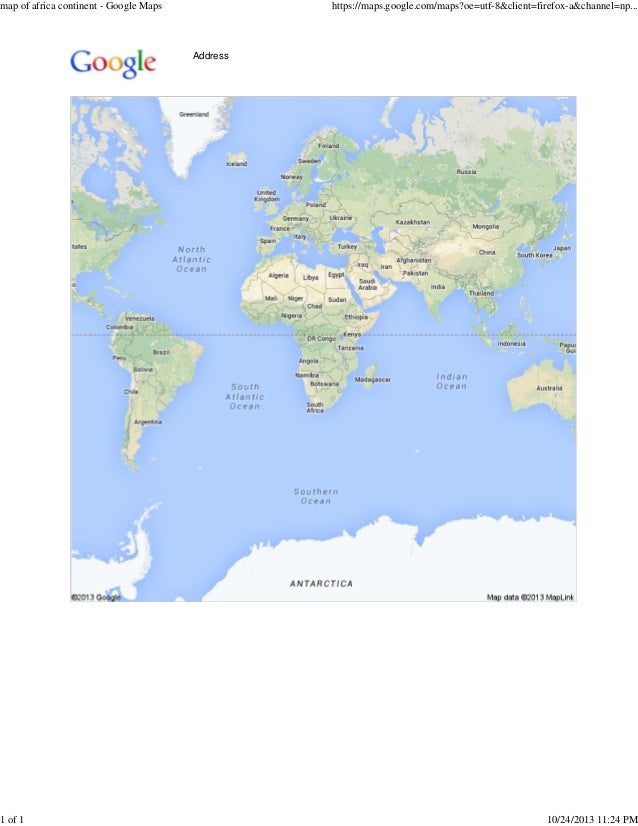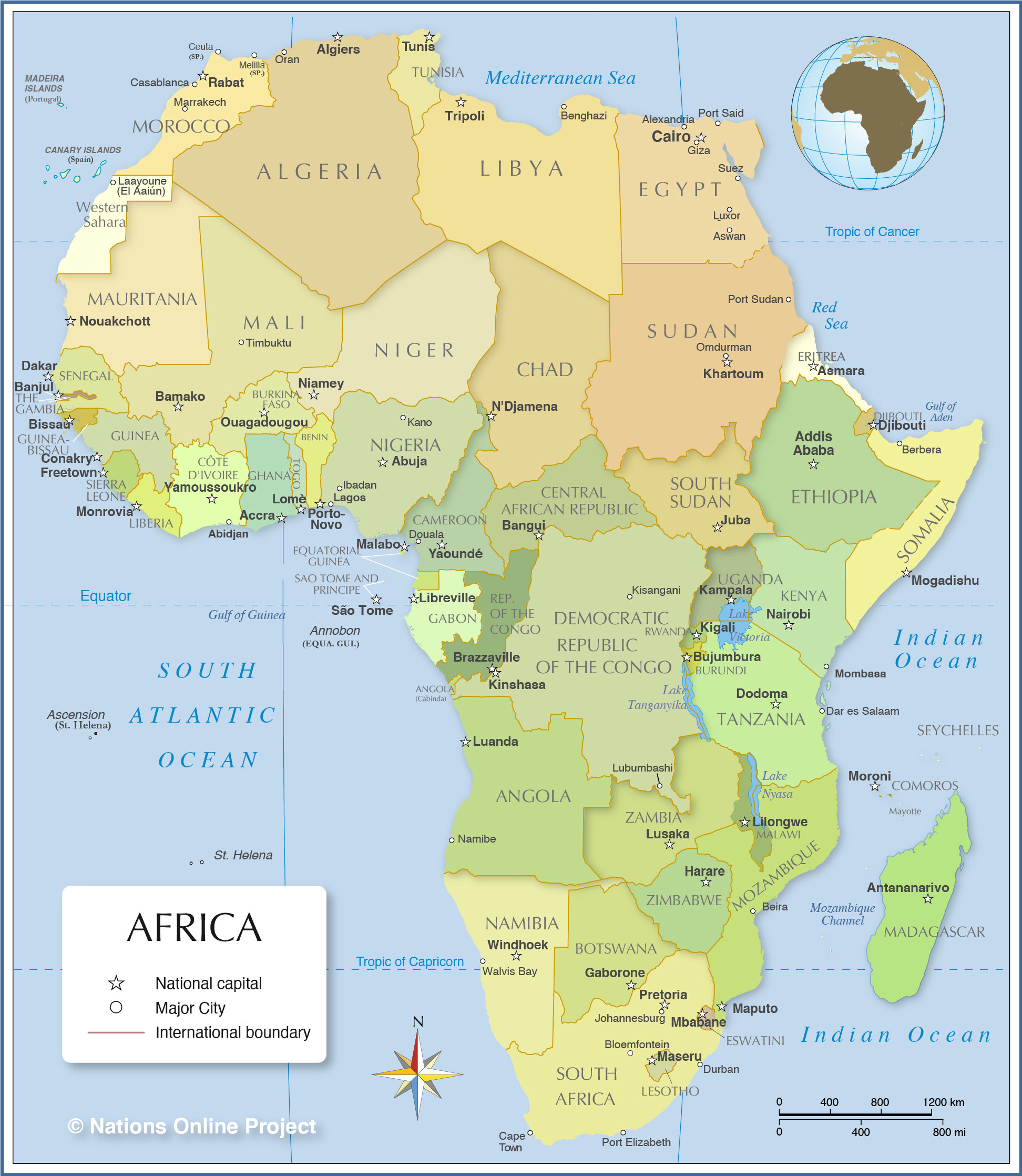Unraveling the Continent: A Comprehensive Look at the Map of Africa in Spanish
Related Articles: Unraveling the Continent: A Comprehensive Look at the Map of Africa in Spanish
Introduction
With great pleasure, we will explore the intriguing topic related to Unraveling the Continent: A Comprehensive Look at the Map of Africa in Spanish. Let’s weave interesting information and offer fresh perspectives to the readers.
Table of Content
Unraveling the Continent: A Comprehensive Look at the Map of Africa in Spanish

The map of Africa, often referred to as "Mapa de África" in Spanish, is a visual representation of the second-largest and second-most populous continent on Earth. This intricate tapestry of landmasses, rivers, and coastlines holds within its borders a rich tapestry of cultures, languages, and histories. Understanding the map of Africa in Spanish opens a window into the continent’s diverse landscapes, its geopolitical dynamics, and its vibrant cultural mosaic.
Exploring the Geographic Landscape
The map of Africa, in Spanish or any other language, is a testament to the continent’s vastness and diversity. It showcases a range of geographical features, including:
- Mountains: The Atlas Mountains in North Africa, the Ruwenzori Mountains in Central Africa, and the Drakensberg Mountains in Southern Africa are prominent features. These mountain ranges play a crucial role in shaping the continent’s climate and influencing local ecosystems.
- Rivers: The Nile, the longest river in the world, flows through northeastern Africa, while the Congo River, the deepest river in the world, traverses Central Africa. These rivers serve as vital lifelines for transportation, agriculture, and biodiversity.
- Deserts: The Sahara Desert, the largest hot desert in the world, dominates North Africa, while the Namib Desert and the Kalahari Desert stretch across southwestern Africa. These arid landscapes are home to unique flora and fauna adapted to harsh conditions.
- Lakes: Lake Victoria, the largest lake in Africa and the second-largest freshwater lake in the world, is situated in East Africa. Other prominent lakes include Lake Tanganyika, Lake Malawi, and Lake Chad. These lakes contribute significantly to the continent’s biodiversity and water resources.
- Coastlines: The African coastline is characterized by long stretches of beaches, numerous bays, and peninsulas. The Atlantic Ocean borders the west coast, the Indian Ocean borders the east coast, and the Mediterranean Sea borders the north coast. These coastlines have played a vital role in trade and cultural exchange throughout history.
Understanding the Political Landscape
The map of Africa, in Spanish or any other language, also reflects the continent’s political landscape, which is characterized by:
- 54 Independent Countries: The African continent is home to 54 independent countries, each with its unique history, culture, and political system. The map provides a visual representation of these nations and their borders.
- Regional Blocs: Several regional organizations, such as the African Union (AU), the Economic Community of West African States (ECOWAS), and the Southern African Development Community (SADC), play a significant role in promoting cooperation and integration among African nations.
- Colonial History: The map of Africa also reflects the continent’s colonial past. European powers colonized most of Africa in the 19th century, leaving a lasting impact on the political landscape, economic development, and cultural identities of many African nations.
Delving into the Cultural Mosaic
The map of Africa, in Spanish or any other language, provides a glimpse into the continent’s rich cultural diversity, which includes:
- Languages: Africa is home to over 2,000 languages, making it one of the most linguistically diverse continents in the world. The map can help visualize the distribution of different language families, such as Afro-Asiatic, Niger-Congo, and Nilo-Saharan.
- Religions: Islam, Christianity, and traditional African religions are the dominant faiths in Africa. The map can help identify areas where different religious groups are concentrated.
- Art and Music: African art and music are incredibly diverse, ranging from traditional masks and sculptures to contemporary paintings and musical genres. The map can provide a starting point for exploring the artistic expressions of different African cultures.
- Culinary Traditions: African cuisine is characterized by its use of fresh ingredients, diverse flavors, and unique cooking techniques. The map can help identify areas where specific culinary traditions are prevalent.
The Importance of Understanding the Map of Africa in Spanish
Understanding the map of Africa in Spanish offers several benefits, including:
- Enhanced Geographic Literacy: The map provides a visual framework for understanding the continent’s geographical features, from its mountains and rivers to its deserts and lakes.
- Greater Awareness of Political Dynamics: The map allows for a better understanding of the continent’s political landscape, including its independent countries, regional blocs, and historical context.
- Appreciation of Cultural Diversity: The map reveals the continent’s rich cultural mosaic, highlighting the diverse languages, religions, arts, and culinary traditions that make Africa unique.
- Informed Decision-Making: Understanding the map of Africa in Spanish can inform decision-making in various fields, such as business, development, and diplomacy.
Frequently Asked Questions about the Map of Africa in Spanish
Q: What are the main geographical features of Africa?
A: Africa is characterized by a diverse range of geographical features, including mountains, rivers, deserts, lakes, and coastlines. The Atlas Mountains in North Africa, the Nile River, the Sahara Desert, Lake Victoria, and the Atlantic coastline are some prominent examples.
Q: How many countries are in Africa?
A: There are 54 independent countries in Africa, each with its own unique history, culture, and political system.
Q: What are the main languages spoken in Africa?
A: Africa is home to over 2,000 languages, making it one of the most linguistically diverse continents in the world. Some of the major language families include Afro-Asiatic, Niger-Congo, and Nilo-Saharan.
Q: What are the main religions practiced in Africa?
A: The main religions practiced in Africa are Islam, Christianity, and traditional African religions.
Q: What are some of the challenges facing Africa?
A: Africa faces several challenges, including poverty, inequality, conflict, climate change, and disease.
Tips for Understanding the Map of Africa in Spanish
- Use Online Resources: Numerous online resources, such as Google Maps, Wikipedia, and Atlas of the World, provide detailed maps of Africa in Spanish.
- Explore Interactive Maps: Interactive maps allow you to zoom in and out, explore different layers of information, and learn about specific locations.
- Study Geographic Features: Pay attention to the continent’s mountains, rivers, deserts, lakes, and coastlines.
- Learn about Political Boundaries: Understand the location and names of African countries and their borders.
- Explore Cultural Diversity: Discover the languages, religions, arts, and culinary traditions of different African cultures.
Conclusion
The map of Africa in Spanish is a powerful tool for understanding the continent’s geography, politics, and culture. By exploring the map, individuals can gain a deeper appreciation for the vastness, diversity, and complexity of Africa. Whether studying history, geography, or simply seeking a greater understanding of the world, the map of Africa in Spanish offers a valuable window into the continent’s rich tapestry of experiences and perspectives.








Closure
Thus, we hope this article has provided valuable insights into Unraveling the Continent: A Comprehensive Look at the Map of Africa in Spanish. We thank you for taking the time to read this article. See you in our next article!
